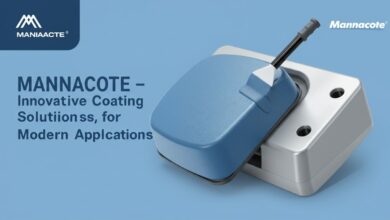Lidarmos – Advancing LiDAR Technology for a Smarter World
Lidarmos: The Next-Generation LiDAR System Driving Innovation in Mapping, Automation, and Environmental Monitoring

What is Lidarmos?
Lidarmos is a next-generation LiDAR-based remote sensing system designed to capture highly accurate 3D maps of physical environments. Using laser pulses, it measures distances with extreme precision, enabling real-time spatial awareness for industries like autonomous driving, surveying, and environmental research.
How Lidarmos Works
The system sends out rapid pulses of laser light that reflect off objects in the surrounding environment. By measuring the time it takes for each pulse to return, Lidarmos calculates exact distances, creating a detailed 3D point cloud representation of the area.
Applications of Lidarmos Technology
Autonomous Vehicles
Navigation and Obstacle Detection
In self-driving cars, Lidarmos provides critical data for identifying obstacles, road conditions, and traffic patterns in real-time.
Enhanced Safety Features
By detecting pedestrians, cyclists, and other vehicles, Lidarmos enables automated safety interventions like emergency braking.
Geospatial Mapping
Land Surveying and Urban Planning
Surveyors use Lidarmos for rapid, high-accuracy mapping of construction sites, city layouts, and natural landscapes.
Infrastructure Monitoring
It helps track the condition of bridges, roads, and railways, predicting maintenance needs before costly repairs arise.
Environmental Monitoring
Forest and Wildlife Studies
Lidarmos can measure forest canopy density, track wildlife habitats, and assist in biodiversity research.
Climate Change Research
Analyzing glaciers, coastlines, and erosion patterns it helps scientists study the effects of climate change.
Core Features of Lidarmos
High-Resolution Mapping
Point Cloud Precision
Lidarmos generates dense point clouds, allowing for detailed surface modeling and accurate measurements.
Multi-Layer Scanning
It can capture multiple reflections in a single laser shot, making it ideal for scanning through vegetation or semi-transparent materials.
Real-Time Processing
Instant Data Analysis
Built-in processing capabilities enable immediate analysis, reducing the need for extensive post-processing.
Cloud Integration
Data can be streamed directly to cloud platforms for remote collaboration and storage.
Durability and Adaptability
All-Weather Operation
Lidarmos functions reliably in rain, fog, and dust thanks to advanced signal filtering.
Multi-Platform Compatibility
It can be mounted on vehicles, drones, boats, or stationary tripods.
Technical Innovations in Lidarmos
Advanced Sensor Technology
Laser Modulation Techniques
Improved modulation reduces noise interference, ensuring cleaner data.
Wide Field of View
Covers more area in a single scan, improving efficiency.
AI and Machine Learning Integration
Automated Object Recognition
Lid-armos uses AI to classify scanned objects instantly, from road signs to vegetation types.
Predictive Modeling
Machine learning algorithms can anticipate movement patterns in dynamic environments.
Industries Benefiting from Lidarmos
Transportation and Logistics
Fleet Management
Trucking companies use Lid-armos to optimize routes and detect hazards.
Port Automation
Assists cranes and robots in navigating shipping yards safely.
Construction and Infrastructure
Project Planning
Architects and engineers use Lid-armos data for precise modeling before construction begins.
Progress Tracking
Weekly scans compare construction progress against project timelines.
Agriculture
Precision Farming
Lid-armos maps crop fields, analyzes soil elevation, and identifies areas needing irrigation.
Livestock Monitoring
Tracks herd movement and pasture health from aerial scans.
Advantages of Lidarmos over Traditional LiDAR
Higher Accuracy and Speed
Faster Scanning Rates
Captures more data points per second than conventional LiDAR systems.
Improved Range
It can detect objects at greater distances without losing accuracy.
Cost-Effectiveness
Reduced Field Time
High efficiency means fewer hours spent in the field.
Lower Maintenance
Durable components minimize downtime and repair costs.
Challenges and Limitations of Lidarmos
Data Management
Storage Requirements
High-resolution scans create large files, requiring robust storage solutions.
Processing Power
Complex datasets demand powerful computers for analysis.
Operational Constraints
Line-of-Sight Limitations
Like all LiDAR systems, Lidarmos can’t scan through solid objects.
Weather Interference
Although advanced, heavy rain or snow can still slightly affect accuracy.
The Future of Lidarmos Technology
Integration with Other Sensors
Sensor Fusion
Combining Lid-armos with radar, GPS, and cameras creates a complete sensing system.
Multi-Industry Applications
Potential expansion into space exploration, mining, and underwater mapping.
Miniaturization and Portability
Lightweight Versions
Future Lid-armos models may be small enough for consumer drones.
Handheld Scanners
Field researchers could carry compact units for on-the-spot mapping.
Conclusion
Lidarmos represents a leap forward in LiDAR technology, combining high-resolution mapping, real-time data processing, and AI-driven analysis. Its versatility makes it a valuable asset across industries, from autonomous vehicles to environmental conservation. As the technology evolves, Lidarmos is set to become an even more integral tool in shaping our understanding of the physical world.




